
Gracillariidae is an important family of insects in the order Lepidoptera and the principal family of leaf miners that includes several economic, horticultural or recently invasive pest species such as the horse-chestnut leaf miner, Cameraria ohridella.

Phyllonorycter apparella, the aspen leaf blotch miner moth, is a moth of the family Gracillariidae. It is found in most of Europe. It is also present in Turkey and North America.
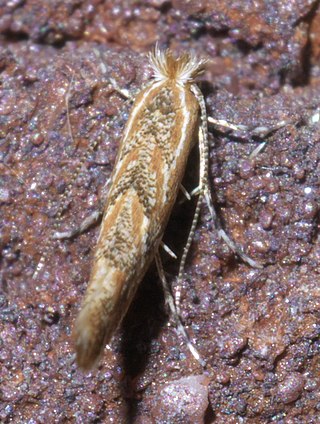
Cremastobombycia is a genus of moths in the family Gracillariidae.
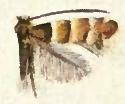
Chrysaster ostensackenella is a moth of the family Gracillariidae. It is known from Ontario, Québec and Nova Scotia in Canada, and the United States. It has also been recorded in 2015 from China and in 2017 from Korea, and in 2022 from Central Italy.
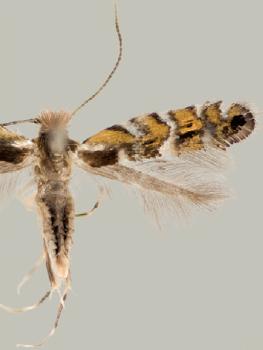
Macrosaccus morrisella is a moth of the family Gracillariidae. In North America it is known from Manitoba, Ontario, and Quebec, south and west to Texas and Colorado.
Cameraria affinis is a moth of the family Gracillariidae. It is known from Quebec, Canada, and the United States.

Cameraria bethunella is a moth of the family Gracillariidae. It is known from Ontario and Quebec in Canada, and Illinois, Kentucky, Connecticut, Maine, New York and Texas in the United States.
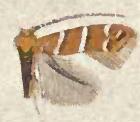
Cameraria corylisella is a moth of the family Gracillariidae. It is known from Manitoba, Ontario, and Quebec in Canada, and Kentucky, Wisconsin, Maine, New York, Connecticut and Vermont in the United States.

Cameraria hamameliella is a moth of the family Gracillariidae. It is known from Ontario, Québec, and Nova Scotia in Canada and throughout the eastern United States.

Cremastobombycia grindeliella is a moth of the family Gracillariidae. It is known from California, United States.
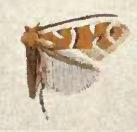
Cremastobombycia ambrosiaeella is a moth of the family Gracillariidae. It is known from Ontario and Quebec Canada, and Illinois, Kentucky, Texas, Maine and New York in the United States.

Cremastobombycia ignota is a moth of the family Gracillariidae. It is known from Illinois, Texas, Kentucky, Maine, New York, Massachusetts, Washington and Ohio in the United States.

Cremastobombycia verbesinella is a moth of the family Gracillariidae. It is known from Florida, United States.
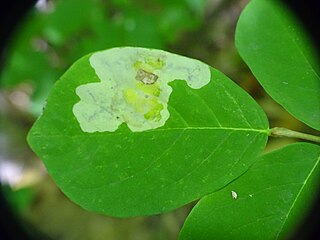
Leucanthiza dircella is a species of moth in the family Gracillariidae. It is known from Canada, and the United States.
Parornix geminatella, the unspotted tentiform leafminer moth, is a moth of the family Gracillariidae. It is known from Québec, Canada, and Florida, Georgia, Maine, Maryland, New York, Vermont, Texas, Colorado, Missouri, Kentucky and Connecticut in the United States.
Caloptilia fraxinella is a moth of the family Gracillariidae. It is known from Canada and the United States.
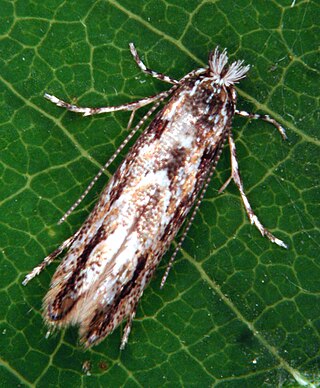
Lithocolletinae is a subfamily of insects in the moth family Gracillariidae. It is distributed worldwide, with most species in temperate regions.
Cremastobombycia kipepeo is a moth of the family Gracillariidae. It is found in eastern Kenya in east African coastal forest.

Gracillariinae are a subfamily of moths which was described by Henry Tibbats Stainton in 1854.






